Have you ever wondered about our future as anglers and hunters, or about the legacy we’ll leave behind for our kids and grandkids? If you care about the great outdoors, or about our sporting heritage and traditions, there are a few simple questions you might want to ask yourself right now.
First, is poor management of our public lands, coupled with lack of access to those same public lands, the largest threat to our hunting and fishing?
No. While our public lands are incredibly important, a huge amount of our fishing and hunting takes place on private lands. Even if we were to lose our public access, many of us would still be able to fish and hunt successfully on private property.
In that case, is development, combined with urban sprawl, the biggest threat to our fishing and hunting?
No. Development and urban sprawl are serious issues, but their impacts tend to be specific and localized. A new housing development in New Jersey isn’t likely to cause problems for hunters in Iowa or anglers in Wyoming. And as you may have heard, there’s still decent fishing and hunting within shouting distance of major U.S. cities like New York, Dallas, Seattle, Miami, Chicago, Los Angeles, Atlanta and Denver. Development and sprawl are major problems, but they’re not at the top of the list.
Does that make the people who want to take away our guns the biggest threat to our fishing and hunting?
No. Guns don’t have any impact on our angling. Nor, in spite of what you may have heard, is there a realistic scenario where we’ll lose our Second Amendment rights. Given the recent Supreme Court rulings on self-defense and bump-stocks, it should be obvious that nobody is coming for our guns.
So if it’s not an attack on our public lands, or the 2nd Amendment — or the issues arising from unchecked urban and suburban development — what’s the biggest threat to our hunting and fishing? Is it pollution? Is it mining? Is it over-regulation, or political interference, or the ongoing assaults on science and expertise? How about habitat fragmentation or a loss of traditional American values?
No, it’s not any of those issues. While our fishing and hunting are indeed beset by a number of problems — at times it can seem like we’re facing a literal ‘death of a thousand cuts’ — the one overarching threat to both our fishing and our hunting is anthropogenic (human-caused) climate change.
Now if you haven’t paid much attention to climate, or if you haven't listened to our scientific experts, you might wonder why that’s the case. How, for example, can we be sure that climate change is real, or that it’s caused by people? Couldn’t it just be a natural phenomena? And how do we know that climate is the most serious threat we face?
Well, let’s take a closer look.
We know that climate change is real because we’re seeing it ourselves. Any hunter or angler worthy of the name and old enough to remember the 1990s should realize that our baseline temperatures are shifting. It may not be happening at the same rate in every single location, but if you’re paying attention to the natural world you can’t miss the escalating temperatures, or the resultant storms, droughts and wildfires.
At the same time, the empirical evidence we see right out our front doors is confirmed by our scientists. There are five major scientific groups that track long-term global temperatures. All five — NASA, the UK’s Met Office, the Japanese Meteorological Agency, NOAA and Berkeley Earth — report that the planet is heating up rapidly. Moreover, the last 10 years are the warmest 10 years on record, while last year (2023) was the hottest year ever recorded. And the single hottest day ever measured was July 22, 2024.
When someone claims that climate change isn’t real, or that our global temperatures aren’t climbing rapidly, they’re essentially asking us to ignore both the overwhelming scientific data and changes we all can see.
But how do we know this warming isn’t natural? That’s an important question, right?
First and foremost, we should look at the peer-reviewed science that explains our current warming. And while the science is vital, it also helps if we rely on our innate common sense.
Scientists, including the scientists at the AAAS, the world’s largest non-government general science membership organization, do a stellar job of explaining the basics of climate change. The AAAS lays out our current situation in black & white:
“The overwhelming evidence of human-caused climate change documents both current impacts with significant costs and extraordinary future risks to society and natural systems. The scientific community has convened conferences, published reports, spoken out at forums and proclaimed, through statements by virtually every national scientific academy and relevant major scientific organization — including the American Association for the Advancement of Science (AAAS) — that climate change puts the well-being of people of all nations at risk.”
To learn more about the issue, feel free to visit NASA, the Royal Society or the U.S. National Academy of Sciences.
Once you’ve caught up on the science, you might also want to spend a minute or two thinking about all the gasoline, diesel fuel, jet fuel, heating oil, natural gas and coal we’ve burned through over the last 150 years.
When we burn fossil fuels — which we do every time we drive a car with an internal combustion engine, or use electricity from a coal or natural gas power plant — we release carbon dioxide (CO2) into the air. CO2 is a major greenhouse gas and it stays in our atmosphere for centuries. Scientists estimate that we’ve added more than 2,500 billion tons — not 2,500 billion pounds, but 2,500 billion tons — of carbon dioxide to the atmosphere since the dawn of the industrial revolution. In essence, we’ve injected a mind-boggling amount of a potent heat-trapping gas into the atmosphere, and we’ve done so for decade after decade after decade. How could that not have an impact? Doesn’t common sense dictate that adding 2,500 billion tons of CO2 to the atmosphere would alter our climate and raise our planetary temperatures?
According to experts at NASA, we’ve literally increased the amount of CO2 in our atmosphere by 50%. To quote the head of NASA’s Goddard Institute for Space Studies, Dr. Gavin A. Schmidt, “It’s real. It’s us. But we still have choices about how bad we let it get.”
When we step back from the ongoing political and social debates about climate change, the facts become far clearer. We’re heating the Earth and we’re doing so rapidly. Scientists have estimated that if we continue to inject massive quantities of CO2 into the atmosphere, every location on the planet will have a new, and unprecedented, climate by the year 2047. That’s only 23 years from now.
Imagine the chaos that will ensue, and the massive negative impacts to our fishing and hunting, if we don’t tackle this threat while we still can. Nature may eventually adapt — it always seems to, at least in the long run — but our landscapes will shift dramatically under the weight of climate change, and our outdoor traditions and sporting heritage will suffer far more than we can imagine. No other issue impacts every single place we fish or hunt. No other problem is so broad, disruptive or dangerous.
Which leaves us with several questions to answer. Will we, as anglers and hunters, accept the reality of the situation and take steps to address the problem? Or will we stick our collective head in the sand, ignore our moral and ethical responsibilities to future generations, and continue to prioritize the status quo above everything else?
In other words, should we believe our eyes and our scientific experts, or should we put on a blindfold, light up a cigarette, and embrace the propaganda from a massive industry that stands to lose $20 to $30 trillion if we shift away from fossil fuels?
We also have to decide which politicians to support this November — some candidates want to do more on climate, while others deny it’s a problem — and whether short-term corporate profits are ultimately more important than sharing a livable planet with our kids and grandkids.
From where I sit, those questions should be easy enough to answer. Now we just need to get to work.
Editor's note: In a 2012 story titled, “If Climate Change Isn’t Real, I’ll Give You My Beretta,” Field & Stream magazine reported that Tanner would give his favorite shotgun — a 12 gauge Beretta Silver Pigeon — to the first person who could prove beyond a reasonable doubt that human-caused climate change wasn’t a serious threat to hunters and anglers. He still has the gun, and the offer still stands.




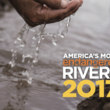
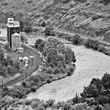




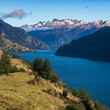
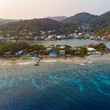


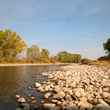
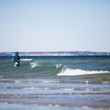



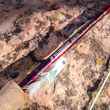
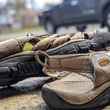



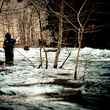
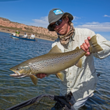

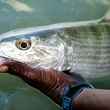
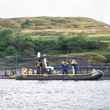
Comments
Thomas replied on Permalink
I used to be surprised that hunters and anglers as a group were not more concerned and knowledgeable about our environment than the general population. No longer. They do not demand that our government do more to address climate change than the population at large does.
Chuck Miller replied on Permalink
Spot on. Streams, rivers, and oceans are getting hotter. The cool water fish must move to find cooler waters or surrender the area to warm water species.
Mike Jensen replied on Permalink
Wow. That’s a very gutsy piece to publish considering that a huge percentage of the hunting and angling community don’t seem to get the connection based on the vehicles I see at the boat ramps, alongside rivers, and in the field. As a lifelong angler and former hunter, I have found myself fishing closer to home sharing the driving when taking longer trips, in order to reduce my carbon footstep. I often feel alone in this effort (hopefully not) but I guess we have to start somewhere. Kudos to publishing this piece!
Pages